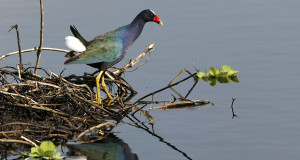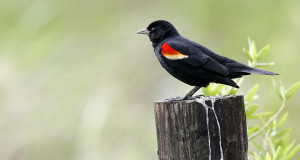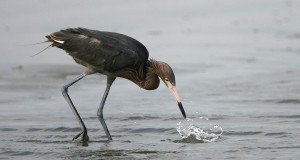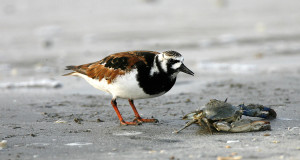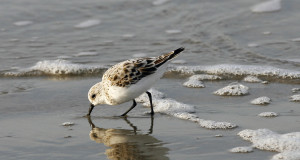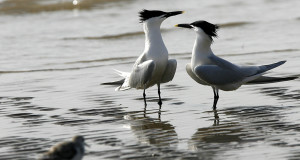Purple Gallinules are generally found walking through the brush or over vegetation at the edge of ponds and streams. Their long toes - which are attached to long, yellow legs - make it easy for them to stand on roots, stems and lily pads.
Read More »Red-bellied Woodpecker
First of all, Red-bellied Woodpeckers do not have a red belly, beyond an occasional pale smudge. They do have a striking red cowl that runs from their bill, over the top of their head and down the back of their neck.
Read More »Red-winged Blackbird
Red-winged Blackbirds are hard to mistake, clinging to reeds in the wind or perched on fence posts in almost every fresh or saltwater wetland, field or brushy area. They are among the most common birds in parks and refuges along the Gulf Coast.
Read More »Reddish Egret
Reddish Egrets have a long, slender neck and a shaggy, rufous plume around the head and neck. Adults have a distinctive pink bill tipped in black.
Read More »Ring-billed Gull
Ring-billed Gulls are among the most common on the coast, found not only by the shore but in inland parks, farms, lakes, parking lots and landfills.
Read More »Roseate Spoonbill
Roseate Spoonbills are almost a cartoon bird, with a ridiculous spatula for a bill, a bald head, bright pink and scarlet plumage and an awkward takeoff that appears to require tremendous effort.
Read More »Royal Tern
Royal Terns are downsized versions of a Caspian Tern with a few subtle distinctions. First, their bill is more orange than red and lacks the dusky tip. Second, their black cap has a shaggy crest and retreats in the off season to reveal a white forehead. And, finally, they don't have the broad, sweeping wings of their cousin.
Read More »Ruddy Turnstone
Ruddy Turnstones wear a calico coat during breeding season, distinctive both on the ground and in flight with their long, down-swept wings.
Read More »Sanderling
Sanderlings rarely sit still, scooting rapidly between advancing and retreating water on the beach in a start-and-stop motion, their small black legs moving so fast that they're almost a blur.
Read More »Sandwich Tern
Sandwich Terns are smaller than their larger cousins, the Royal and Caspian terns, and easily identifiable by their shaggy black crest and yellow tip on their thin black bill.
Read More »